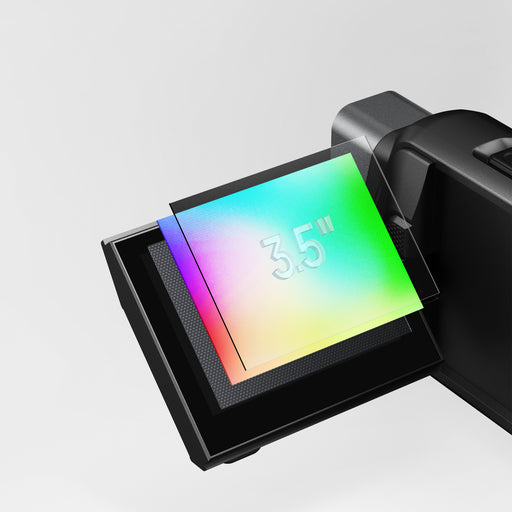FAQS
While traditional visible-light cameras capture images of objects radiating light visible to the naked eye, an infrared camera captures infrared light, which the human eye cannot see. All objects radiate some form of heat energy, but some wavelengths within the electromagnetic spectrum are invisible, including infrared. Sensors in an infrared camera capture a particular range of invisible energy emission (700-1000 nm) and then express each heat value (or wavelength) through a set of corresponding colors. The resulting image is called a thermography and is usually viewable on a LCD screen, which displays the thermograph.
Traditional cameras capture images of objects reflecting light visible to the naked eye, however an infrared camera captures infrared light, which is invisible to the naked eye. All objects radiate energy, some of that energy falls within the spectrum of infrared light. Infrared emission occurs within the energy wavelength range of 700-1000 nm, and most importantly this corresponds to a thermal value. In other words it can be used to calculate the temperature of the surface of the object without even touching it. The colors that you see in an infrared image are not the colors of infrared light, they are just symbolic of the surface temperatures that you are looking at on the object. The resulting image is called a thermograph.
From a terminology standpoint infrared radiation is defined by having the wavelength in the fixed interval 0.7 - 300 micrometers, this is a convention of the electromagnetic spectrum. However, the term thermal radiation refers to the thermal radiation emitted by all objects - it does not have a wavelength designation. When it comes to infrared cameras however, they are frequently referred to as thermal imaging cameras.
Infrared cameras have a wide range of applications. They are most commonly known for their ability to perform temperature calculations. Many of the thermometers used to screen people for fever during the COVID-19 pandemic are infrared because it allows the temperature to be calculated without touching, thereby minimizing the spread of disease. So thermal imaging cameras are very helpful to medical and veterinary professionals to identify injury and illness. Electricians and building inspectors also utilize IR technology to detect deterioration, corrosion, water leaks, and other potential dangers. IR is also advantageous because obstructions like fog, trees or darkness do not hinder the image. Law enforcement and hunters can use thermography to detect security threats or predators under the cover of night or even hidden behind objects or walls. In the PCB (Printed Circuit Board) industry, infrared cameras can quickly detect a variety of circuit defects to improve work efficiency. Circuit defects include current leakage, short circuit, capacitor breakdown, circuit aging and components defects. Infrared thermography also maintains a level of safety as there is no direct contact necessary to obtain the measurement, so there is no risk of burns, shock, short circuit, or transmission of disease.
Infrared cameras should not be confused with night vision, which enhances visible light. Because infrared cameras measure light that is not visible to the human eye, they can work in darkness as well as daylight. Some professional photographers enjoy using infrared cameras to capture artistic images because they reflect elements like colors, textures, the sky, trees, and even human subjects differently than visible light photographs.
Water, or other fluid, leaks almost always emit a different wavelength of infrared light compared to their dry surroundings. If you view a puddle of water or a stream of drips it will be identifiable to someone performing an inspection with an infrared camera. Infrared cameras make excellent infrared water leak detectors.
Usually, no it won’t. An infrared camera detects the infrared light being emitted from other objects and if you shine more infrared light on those objects usually that results in the contrast between them being blurred. We don’t include infrared illuminators with our cameras because it does not improve the image quality.
For benchtop applications, usually thermal cameras for printed circuit board (PCB) repair are used to find hot spots on a printed circuit board or other similar electronic device. Hot spots are usually indicative of component failures, electrical shorts, and other circuit board problems. The benchtop thermal imaging camera allows a technician to identify such problems and replace the faulty component without having to dive too deeply into the electrical engineering of the device.
Although our naked eyes can't see infrared light, the sensors in your phones and digital cameras can. The cell phone’s camera is more sensitive to light than human eyes are, so it "sees" the infrared light that is invisible to us. If you look at your television remote (which emits IR waves when the buttons are pushed) with your digital camera sensor you’re likely to see more than you can with your naked eye. Also, add-on devices can be purchased that turn your phone into a sensitive infrared camera that uses your phone’s display to show the thermograph.
One of the biggest advantages of IR is that obstructions like fog, trees or darkness do not hinder the image. That means that police can use IR cameras to find criminals hiding in the bushes, and it also means that home inspectors can use IR cameras to look at hot and cold water pipes inside a wall and watch how the temperature of those pipes change when you turn on the water, even if you can’t see the pipes with your naked eye. IR cameras see things best when there is a contrast in temperature so if there is some sort of temperature contrast inside or behind a thin wall (think drywall, as opposed to cinder blocks) then the camera should be able to see it. If the wall is all one temperature and there is no contrast then you won’t see any detail through the wall.














